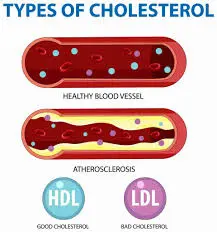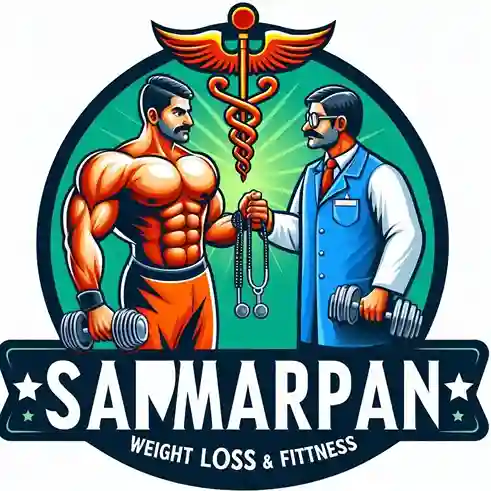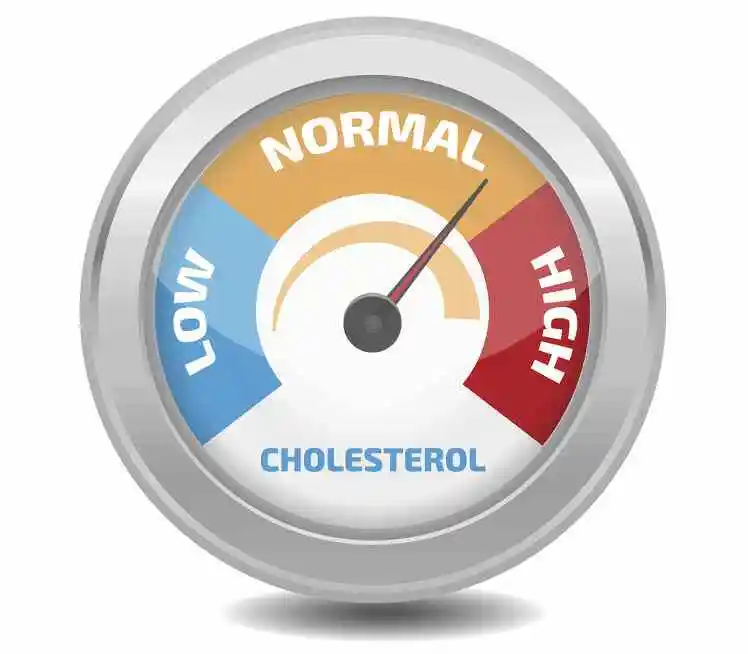Cholesterol
Introduction
Cholesterol is a waxy, fat-like substance found in your body and in certain foods. It is essential for producing hormones, vitamin D, and substances that aid digestion, such as bile acids. While the body produces all the cholesterol it needs, it is also obtained from dietary sources like meat, eggs, and dairy products.
Your risk of having too much low-density lipoprotein (LDL), or “bad cholesterol,” in your blood increases if you are overweight. Your risk of heart disease and other major disorders increases as a result. Your body produces up to 10 milligrams of additional cholesterol every day for every 10 pounds of excess weight.
Losing weight can reduce your risk of diabetes, heart disease, and cholesterol.
Certain diets may aid in weight loss and cholesterol reduction. Plant-based diets, the Mediterranean diet, the DASH diet, and TLC diets are a few illustrations of these.
Your liver manufactures the waxy, fatty material known as cholesterol. It is essential for some body processes.
High cholesterol, on the other hand, might clog your arteries and cause the blood to flow less freely. A heart attack or stroke could result from this.
What is cholesterol?
All of your body’s cells contain the waxy, fat-like component known as cholesterol. Your body needs cholesterol to function properly. It can, however, adhere to the walls of your arteries and constrain or even block them if your blood contains an excessive amount of it. This increases your risk of heart disease, particularly coronary artery disease.
Your blood contains a waxy material called cholesterol. Although it is necessary for cell formation, excessive amounts might have negative health effects. Different kinds of cholesterol exist. Knowing how they impact your health is crucial.
Your liver is the source of cholesterol. It is carried by lipoproteins, which are proteins, through the blood. Sometimes referred to as the “bad” cholesterol, LDL is a type of lipoprotein. An accumulation of cholesterol in your arteries is caused by a high LDL level. HDL, another kind, is commonly referred to as the “good” cholesterol.
It returns cholesterol to your liver from other areas of your body. The cholesterol is then eliminated from your body by your liver.
Cholesterol Types

Low-density lipoprotein, or LDL, and high-density lipoprotein, or HDL, are the two primary forms of cholesterol.
- LDL Cholesterol: Often referred to as “bad” cholesterol, LDL can accumulate in the artery walls, narrowing and hardening them. This may result in stroke or heart disease.
- HDL Cholesterol: Often called “good” cholesterol, HDL helps remove LDL from your arteries. Your risk of heart disease may be reduced if your HDL levels are higher.
Excessive cholesterol and obesity
When a person has too much body fat, they are considered obese. High cholesterol is one of the many health issues it can cause or exacerbate.
- Heart Disease: Atherosclerosis, a disorder in which your arteries narrow and clog, can be brought on by high cholesterol. Heart attacks may result from this.
- Stroke: A stroke may result from narrowing or blockage of the arteries that supply your brain.
- The condition known as peripheral artery disease occurs as the arteries in your legs narrow, making it more difficult for blood to get to your muscles.
Signs of raised cholesterol levels
High cholesterol can trigger a heart attack or stroke by gradually blocking an artery, however, it normally doesn’t show any symptoms. A clogged artery’s initial physical indication is frequently a life-threatening incident.
Even in the absence of symptoms, people should be sure to routinely check their cholesterol levels.
Blood work is usually ordered by a doctor every four to six years. The only way to determine whether someone has high cholesterol is through a blood test.
Individuals who have additional heart disease risk factors might require more frequent cholesterol checks. Among these risk factors are:
- Smoking
- Diabetes
- Obesity
elevated blood pressure, a family history of heart disease, or a history of high blood cholesterol
The Function of Exercise and Diet
Maintaining an active lifestyle and eating a nutritious diet will help you lose weight and control your cholesterol.
- Eating healthily
- Eat fewer foods high in cholesterol and saturated and trans fats to reduce your LDL levels. Eat a diet rich in whole grains, lean meats, fruits, and vegetables. Omega-3 fatty acid-rich foods, such as flaxseeds and salmon, can also lower your cholesterol.
Frequent physical activity
You can lose weight by taking part in regular physical activity. It can increase HDL cholesterol and decrease LDL cholesterol. Every week, try to get in at least 150 minutes of moderate-intensity activity, such as brisk walking.
- What therapies are available to treat high cholesterol?
Medication and heart-healthy lifestyle modifications are the primary therapies for high cholesterol. Healthy eating, controlling weight, and engaging in regular exercise are all part of the lifestyle adjustments.
- How might a diet help me reduce my cholesterol?
A diet that lowers cholesterol is one of the heart-healthy lifestyle adjustments. One example is the DASH diet. The Therapeutic Lifestyle Changes (TLC) diet is another. It suggests that you:
Select healthier fats. Both total and saturated fat should be kept to a minimum. Dietary fats should make up no more than 25 to 35 percent of your daily caloric intake, and saturated fat should make up no more than 7 percent. The following are the maximum amounts of saturated fats you should consume each day, depending on your caloric intake:
Because it increases your LDL (bad cholesterol) level more than any other dietary fat, saturated fat is considered a harmful fat. Some meats, dairy products, chocolate, baked goods, and processed and deep-fried foods include it.
Choose meals that include healthy fats, such as lean meat, and nuts, and unsaturated oils like canola, olive, and safflower oils, in place of saturated fats.
Eat fewer foods high in cholesterol. You should consume fewer than 200 mg of cholesterol each day if you’re aiming to reduce it. Animal items include liver and other organ meats, egg yolks, shrimp, and whole milk dairy products containing cholesterol.
Consume soluble fiber in plenty. Soluble fiber lessens the absorption of cholesterol in your digestive system. Aim for between 10 and 25 grams of it each day. Foods high in soluble fiber consist of:
- Whole-grain cereals like oat bran and oats
- Fruits including pears, oranges, bananas, apples, and prunes
- Legumes like lima beans, kidney beans, chickpeas, black-eyed peas, and lentils
Consume a variety of fruits and vegetables. Vitamins, fiber, and other nutrients are abundant in them.
Eat more plant-based sterols and stanols. These compounds also aid in preventing cholesterol absorption in the digestive tract. Try to consume two grams of them each day. Additionally, they are added to bread, margarine, and some varieties of orange juice.
Consume foods rich in omega-3 fatty acids. Triglyceride and LDL levels can be decreased by these particular lipids. They may also reduce your risk of cardiac rhythm issues and assist regulate blood pressure. They may reduce your chance of a heart attack if you have heart disease. You can find omega-3 fatty acids in:
- Fish like mackerel, canned or fresh tuna, and salmon. It is recommended that most individuals ingest these fish twice a week. However, you should stay away from seafood like mackerel which could have high levels of mercury if you are pregnant or nursing.
- Plant sources include soybean and canola oils, chia seeds, walnuts, and quinoa. However, their omega-3 acid content is lower than that of fish sources.
- Foods that have been fortified, include some types of milk, yogurt, eggs, juices, soy drinks, and baby formulae.
Don’t use too much salt. Try to keep your daily intake of sodium (salt) to no more than 2,300 milligrams, or roughly one teaspoon. This covers all of the salt you consume, whether it’s already in food items, added during preparation, or utilized at the table. Reducing salt intake can help lower blood pressure, which lowers the risk of heart disease, but it won’t cut cholesterol. By selecting low-salt and “no added salt” dishes and seasonings at the table or in the kitchen, you can lower your sodium intake.
Don’t drink too much. Alcohol increases caloric intake, which might result in weight gain. Being overweight might cause your HDL and LDL levels to drop. Because excessive alcohol use can elevate blood pressure and lipid levels, it can also increase your risk of heart disease. Drinking is not recommended however if you do:
- If you’re a man, limit your daily alcohol intake to two drinks.
- If you’re a woman, limit your daily alcohol intake to one drink.
How Being Obese Increases Your Chance of Having High Cholesterol
Your body demands cholesterol. The waxy component is produced by your liver to aid in cell growth and fat storage. Additionally, it helps your body produce vitamin D, which is necessary for a strong immune system.
Hypercholesterolemia, or having too much LDL in your blood, is the first sign of trouble. This can lead to the accumulation of fat deposits (atherosclerosis), obstruct your arteries, and ultimately limit blood flow. That might result in a stroke or heart attack.
Being overweight or obese may elevate your risk of having high cholesterol because it can alter how your body produces and processes lipoproteins, such as cholesterol and triglycerides, which are fatty substances your body requires in trace amounts.
Your liver produces glycerol from free fatty acids, or fats, and a type of glucose, or sugar. Higher levels of other lipoproteins, such as cholesterol, may occur from your body producing too many triglycerides.
Therefore, being obese or overweight increases your risk of having high triglycerides, which in turn increases your risk of having high cholesterol because you’re more likely to:
Possess more body fat, which raises the quantity of free fatty acids that reach your liver. This is particularly valid if you have excess weight around your belly button.
Have insulin resistance, which can also raise your liver’s levels of free fatty acids.
Have inflammation all over your body? This can have an impact on how your body handles other lipoproteins and HDL, or “good cholesterol.”
How Losing Weight Can Reduce Cholesterol
Because losing weight can lower your body’s fat percentage and lower your risk of inflammation, it can also lower your cholesterol levels.
Insulin resistance can be reversed by weight loss and increased physical activity, which will improve your body’s ability to control hormones and lipoproteins.
The Appropriate Weight Loss to Reduce Cholesterol
Your cholesterol assessments may improve even if you only lose 10 pounds.
In one study, the levels of LDL, total cholesterol, and triglycerides were significantly lower in those who dropped at least 5% of their body weight. (The men in the study who lost 5% to 10% of their body weight fared better than the women who did the same.) However, triglyceride levels were the only thing that decreased in those who diminished less than 5% of their body weight.
Ways to Reduce Your Weight
When it comes to lowering cholesterol, it’s not just what you eat that matters, but also how much you eat. Reduce cholesterol by adhering to the TLC (therapeutic lifestyle changes) diet. It’s designed solely to support you in keeping a healthy weight.
Eat less fat by reading the packaging. Steer clear of saturated fats, which are found in red meat, and trans fats (also known as “partially hydrogenated vegetable oil”), which are found in margarine and baked goods. Additionally, read the labels of dairy products.
Be mindful of your portions: Lean protein should make up 25% of your plate at meals, while multigrain starches (try sprouted grain bread and brown rice or quinoa) should make up the remaining 25%. Non-starchy vegetables should make up the other half. (If you use canned or frozen vegetables, be sure the label states “no salt added.”) Snacking in between meals is acceptable when following a diet to reduce cholesterol.
In reality, you can prevent overeating and “crashing” between meals by eating five or six modest meals a day as opposed to three large ones. Keep an eye out for nutritious snacks such as apples, carrot sticks, and blueberries, which are considered to be among the best “superfoods.”
When following a diet to reduce cholesterol, swap whole-wheat pasta, bagels, and white sandwiches. They typically include more heart-healthy fiber and fewer calories. Avoid drinking too many calories. Reduce your intake of juice, soda, and alcohol. Instead, drink water to stay hydrated. Limit your alcohol consumption to no more than two drinks per day for men and one drink per day for ladies.
- Get moving: It only takes 20 minutes of exercise three times a week. Build up to 30 minutes five times a week, starting slowly. One effective technique to get moving is to go for a walk.
- Quit smoking: People may gain a few pounds after quitting smoking. Don’t let that fear deter you. Your HDL levels drop when you smoke. Even secondhand smoking exposure might hurt your cholesterol levels. Quitting will improve your general health.
The top 5 lifestyle modifications to lower cholesterol
Modifications to your lifestyle can lower your cholesterol and increase the therapeutic effect of drugs that lower cholesterol.
Your risk of heart disease and heart attacks is increased by high cholesterol. You can lower your cholesterol with medication. Try these five healthy lifestyle adjustments if you want to improve your cholesterol first.
These alterations may enhance the cholesterol-lowering effects of any drugs you presently use.
Consume heart-healthy meals
A few dietary adjustments can lower cholesterol and strengthen your heart:
Cut down on saturated fats. Red meat and full-fat dairy products are the main sources of saturated fats, which increase total cholesterol. The “bad” cholesterol, low-density lipoprotein (LDL), can be decreased by having fewer saturated fats.
- Get rid of trans fats. Trans fats are frequently found in margarine and store-bought cookies, crackers, and cakes. They are sometimes identified on food labels as “partially hydrogenated vegetable oil.” Trans fats increase total cholesterol. The use of partly hydrogenated oil from vegetables is prohibited by the Food and Drug Administration.
- Consume foods high in omega-3 fats. There is no effect of omega-3 fatty acids on LDL cholesterol. However, they also lower blood pressure, which is another heart-healthy advantage. Omega-3 fatty acid-rich foods include walnuts, flaxseeds, herring, mackerel, and salmon.
- Boost the quantity of soluble fiber. The amount of cholesterol that enters your bloodstream might be decreased by soluble fiber. Foods including oatmeal, kidney beans, Brussels sprouts, apples, and pears are good sources of soluble fiber.
Whey protein should be added. Milk and other dairy products contain whey protein, which may be the cause of many of the health advantages associated with them. Research has indicated that taking whey supplements for protein reduces blood pressure, LDL cholesterol, and total cholesterol.
Get more exercise and be more active most days of the week.
Engaging in physical activity helps lower cholesterol. High-density lipoprotein (HDL), or “good” cholesterol, can be increased with moderate exercise. Work out for at least 30 minutes five times a week, or engage in vigorous aerobic activity for 20 minutes three times a week, with your doctor’s approval.
You can start losing weight by increasing your physical activity, even if it’s only for brief periods multiple times a day. Think about:
Walking briskly every day during your lunch break
Taking a bicycle to work
Engaging in a preferred sport
Joining an exercise club or finding an exercise partner can help you stay motivated.
Give up smoking
Your amount of HDL cholesterol increases when you quit smoking. The advantages come fast:
Your heart rate and blood pressure recover to normal after 20 minutes of stopping smoking.
Your lung function and blood circulation start to improve three months after you stop smoking.
Your chance of getting heart disease is halved within a year of stopping smoking.
Reduce your weight
Excess weight is a contributing factor to elevated cholesterol levels. Little adjustments add up. Replace your sugar-filled drinks with tap water. Eat pretzels or air-popped popcorn as a snack, but check how many calories you consume. Try sherbet or low-fat candies, such as jelly beans, if you’re craving something sweet.
Seek methods to add extra movement to your everyday schedule, including parking further away from your office or using the steps rather than the elevator. During work breaks, go for walks. Cooking and yard preservation are examples of standing tasks that should be increased.
Only consume alcohol sparingly.
Higher HDL cholesterol levels have been associated with moderate alcohol consumption, but the benefits aren’t substantial enough to suggest alcohol to someone who doesn’t currently drink.
Drink alcohol sparingly if you do. For healthy individuals, that implies that women of all ages and men over 65 may have up to one drink per day, while males 65 and under may have up to two drinks per day.
Heart failure, strokes, and high blood pressure are just a few of the major health issues that can result from excessive alcohol consumption.
Which meals can aid in weight loss and cholesterol reduction?
The following items should form the foundation of a heart-healthy diet, according to the American Heart Association (AHA):
- Foods low in saturated fat, like skinless lean meat cuts and low-fat dairy products, as well as minimally processed, healthful fats like those in almonds, avocados, and fish.
- fruits and vegetables (white potatoes excluded), foods mostly composed of whole grains as opposed to refined ones, such pasta and whole wheat bread, and plant-based proteins like legumes at least two meals a week of fatty fish, lean and unprocessed meats, and liquid plant oils like olive oil
Foods to stay away from
The following foods can raise your cholesterol and cause you to gain weight:
- Red meats, untrimmed fatty meats, and full-fat dairy products including cheese, butter, ice cream, cream, and whole cow’s milk
- Donuts, cakes, and cookies are examples of baked products that include saturated and trans fats.
- Tropical oils, such as coconut and palm oils, are among the goods that contain hydrogenated vegetable oils in the ingredients panel.
- Solid solid fats found in fried meals, such as lard, stick margarine, and shortening
- foods high in salt, alcohol, sugar, and sweetened beverages
Modifications to the Therapeutic Lifestyle (TLC) to Reduce Cholesterol
The National Heart, Lung, and Blood Institute developed the three-part Therapeutic Lifestyle Changes, or TLC, Program to lower cholesterol.
The TLC Program: What is it?
The National Heart, Lung, and Blood Institute developed the three-part Therapeutic Lifestyle Changes, or TLC, Program to lower cholesterol. Many people have adopted heart-healthy eating habits as a result of the TLC Program’s well-known diet plan.
The TLC Program lowers high blood cholesterol and enhances heart health by combining nutrition, exercise, and weight control. The Program’s methodical approach can reduce the risk of heart disease, metabolic disease, and other severe disorders as well as LDL cholesterol, or the “bad” cholesterol.
The program begins by promoting physical activity and a heart-healthy diet while reducing other heart disease risk factors like high blood pressure and smoking.
The TLC Diet: What is it?
The TLC diet is a heart-healthy eating plan that makes it easier and healthier to choose, prepare, and cook foods.
Fundamental to the TLC diet is the following:
- Reduce cholesterol and saturated fat by increasing plant sterols and stanols, which are present in whole grains, legumes, nuts, and oils like avocado and olive.
- Boost soluble fiber content in foods like oats, beans, and fruits.
The Dietary Guidelines of TLC
Because too much-saturated fat raises blood cholesterol, especially LDL cholesterol, the TLC Diet is focused on reducing daily intake of this type of fat. Reducing consumption of foods high in saturated fat also helps lower dietary cholesterol intake. The TLC Diet proposes including soluble fiber, plant stanols, and sterols in daily meals to additionally reduce cholesterol levels.
Soluble fiber prevents lipids and cholesterol from entering the bloodstream through the gut walls. Similar to soluble fiber, plant stanols, and sterols aid in reducing LDL cholesterol by preventing the digestive tract from absorbing cholesterol. For the TLC Diet to effectively treat and reduce LDL cholesterol, these three crucial dietary adjustments must be made every day.
Healthy Eating with Care
The TLC Diet emphasizes eating well for heart health, but it also teaches people how to eat well, or how to cook or prepare foods in a heart-healthy way.
Eating heart-healthy food doesn’t have to mean sacrificing flavor. The TLC diet suggests cutting back on portion sizes or swapping out items rich in cholesterol and saturated fat for healthier alternatives. Good choices include fruits, vegetables, legumes (beans and lentils), nuts, whole grains, dairy products with little or no fat, fish, chicken without the skin, and, in moderation, lean meats.
Limiting daily sodium consumption to 2,300 mg is also crucial. Use herbs and spices that don’t contain salt to add flavor to your heart-healthy meals.
Exercise
Another important component of the TLC Program is increasing physical activity, which is a step with numerous advantages. One of the main risk factors for heart disease is inactivity. Reducing sedentary behavior and engaging in regular physical activity can help control weight and, consequently, lower LDL cholesterol. Additionally, it can help lower high blood pressure, enhance heart and lung fitness, and raise HDL cholesterol and lower triglycerides. It can also lower the chance of getting diabetes or, if it already exists, diminish the requirement for insulin.
TLC and Connections with Medical Professionals
When it comes to treating high cholesterol, healthcare professionals are crucial collaborators. A better understanding of the treatment and the most effective way to administer it results from improved communication with healthcare providers. Other medical experts who might join the treatment team are likewise subject to this requirement. The following advice will help the relationship succeed:
- Raise your voice. Ask inquiries and request answers in plain terms if something is unclear.
- Put it in writing. Note down any directions for therapy. Bring a friend to the visit if a hearing is an issue.
- Maintain documentation. At every visit, note the test results.
Examine the course of treatment. Take advantage of every visit to review the treatment strategy. Verify objectives and ensure that everyone agrees on the next course of action.
Keep your mind open. Provide thorough and truthful responses to any inquiries the healthcare provider may pose.
Discuss any difficulties you have had adhering to the TLC Program. Modifications can likely be made to make the software easier to follow.
Discuss any side effects or symptoms. If a side effect occurs, briefly describe the symptom, when it began, how frequently it occurs, and whether it has been growing worse.
Keeping Your Weight in Check
Being overweight or obese raises the risk of high LDL cholesterol, high blood pressure, diabetes, heart disease, some types of cancer, and other severe health issues. Additionally, gaining too much weight around the waist increases the risk of getting metabolic syndrome. Any excess weight loss lowers these risks and improves triglyceride and cholesterol levels.
Weight and LDL cholesterol can be controlled with dietary adjustments and increased exercise. The primary goal of the TLC Program will be to reduce LDL cholesterol to the target level by making modifications like cutting back on calories and saturated fat and boosting fiber, which may also aid in weight loss.
Living the Lifestyle of TLC
Adopting the TLC Program can help people live longer, healthier lives by lowering heart disease risk and other risk factors, such as cholesterol. However, changing one’s lifestyle is never easy. Here are some pointers to improve your chances of success:
- Start a TLC diary to chart your weight, physical activity, and food intake to monitor any changes. Healthcare professionals can also evaluate progress with the use of a journal.
- To make improvements, set SMART goals, such as increasing your daily step count by 2,000 or including a new vegetable in one meal per week. Specific, Measured, Appropriate, Realistic, and Time-Bound are the acronyms for SMART goals.
- When a goal has been met, come up with a reward—not food.
Conclusion
A heart-healthy diet may help you lose weight and reduce your cholesterol. The TLC diet, the DASH diet, and the Mediterranean diet are a few possible healthy diets. Vegetarian and vegan diets, which are plant-based, can also help reduce cholesterol.
It’s crucial to see a medical expert or licensed dietitian before beginning a new diet or if you’re not sure which meals are ideal for you. They can assist you in creating a personalized diet.
FAQs
Is it possible to lose weight by reducing cholesterol?
Certain diets may aid in weight loss and cholesterol reduction. Plant-based diets, the Mediterranean diet, the DASH diet, and TLC diets are a few examples of these. Your liver produces the waxy, fatty material known as cholesterol. It is essential for several body processes.
Does weight have an impact on high cholesterol?
Weight gain is one of the few symptoms that high cholesterol often doesn’t induce. In actuality, underweight and healthy-weight individuals can also have high cholesterol, even though it is often linked to weight growth. However, being obese or overweight raises the risk of elevated cholesterol.
Which ten indicators point to elevated cholesterol?
Numbness and nausea.
Slurred words.
Extreme exhaustion.
Chest discomfort or angina.
Breathlessness.
Coldness or numbness in the limbs.
Elevated blood pressure.
How much cholesterol is healthy for losing weight?
What is the recommended daily intake of cholesterol? According to dietary recommendations, cholesterol intake should not exceed 300 mg daily. A person should focus more on cutting back on foods that are heavy in added sugars, trans fats, and saturated fats.
Does rice have a low cholesterol content?
White rice usage may raise cholesterol levels, depending on some research. On the other hand, selecting whole grain kinds may help someone control their cholesterol and provide additional fiber and nutrients to the diet.
Does coffee raise cholesterol levels?
It’s interesting to note that several research has already looked into the possible link between coffee and cholesterol. Coffee drinking has been shown to raise cholesterol, even though the majority of the research has been small.
Is high cholesterol a result of stress?
Being under a lot of stress: Stress causes your body to create cholesterol because it alters hormones. Alcohol consumption: Excessive alcohol consumption might increase total cholesterol. Not getting enough exercise: Your cholesterol levels are improved by physical activity, such as aerobic exercise.
Reference
- Cooper, J. (2023, July 9). Cholesterol and your weight. WebMD. https://www.webmd.com/cholesterol-management/cholesterol-and-weight
- Can lifestyle changes benefit your cholesterol? (n.d.). Mayo Clinic. https://www.mayoclinic.org/diseases-conditions/high-blood-cholesterol/in-depth/reduce-cholesterol/art-20045935#:~:text=Playing%20a%20favorite%20sport,Drink%20alcohol%20only%20in%20moderation
- National Library of Medicine. (n.d.). How to Lower Cholesterol with Diet. https://medlineplus.gov/howtolowercholesterolwithdiet.html
- Edwards, J. M. (2023, December 20). The best diets to help you lower cholesterol and lose weight. Healthline. https://www.healthline.com/health/high-cholesterol/diet-to-lower-cholesterol-and-lose-weight#takeaway
- Therapeutic Lifestyle Changes (TLC) to lower cholesterol | NHLBI, NIH. (n.d.). NHLBI, NIH. https://www.nhlbi.nih.gov/education/TLC-Therapeutic-Lifestyle-Changes-Lower-Cholesterol#:~:text=Maintaining%20a%20Healthy%20Weight,also%20help%20with%20weight%20loss.




23 Comments